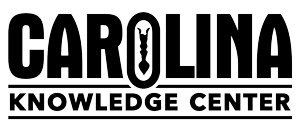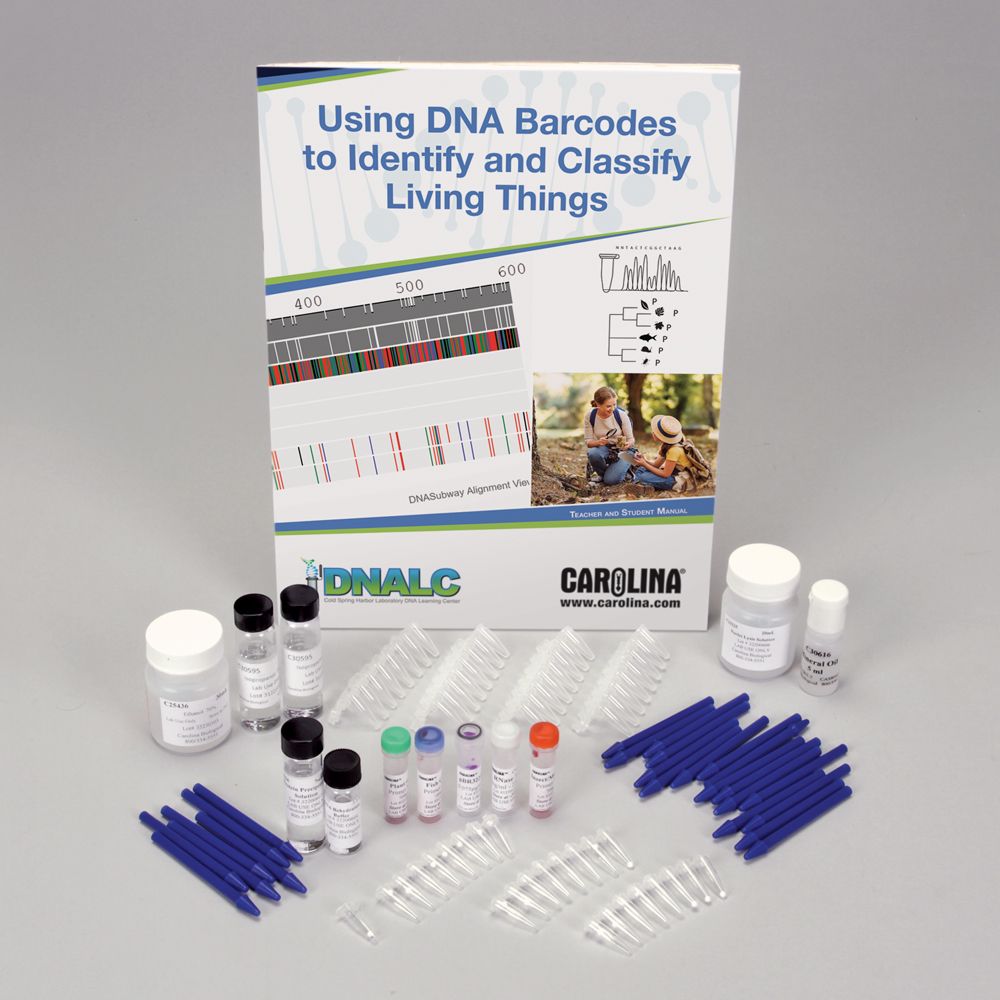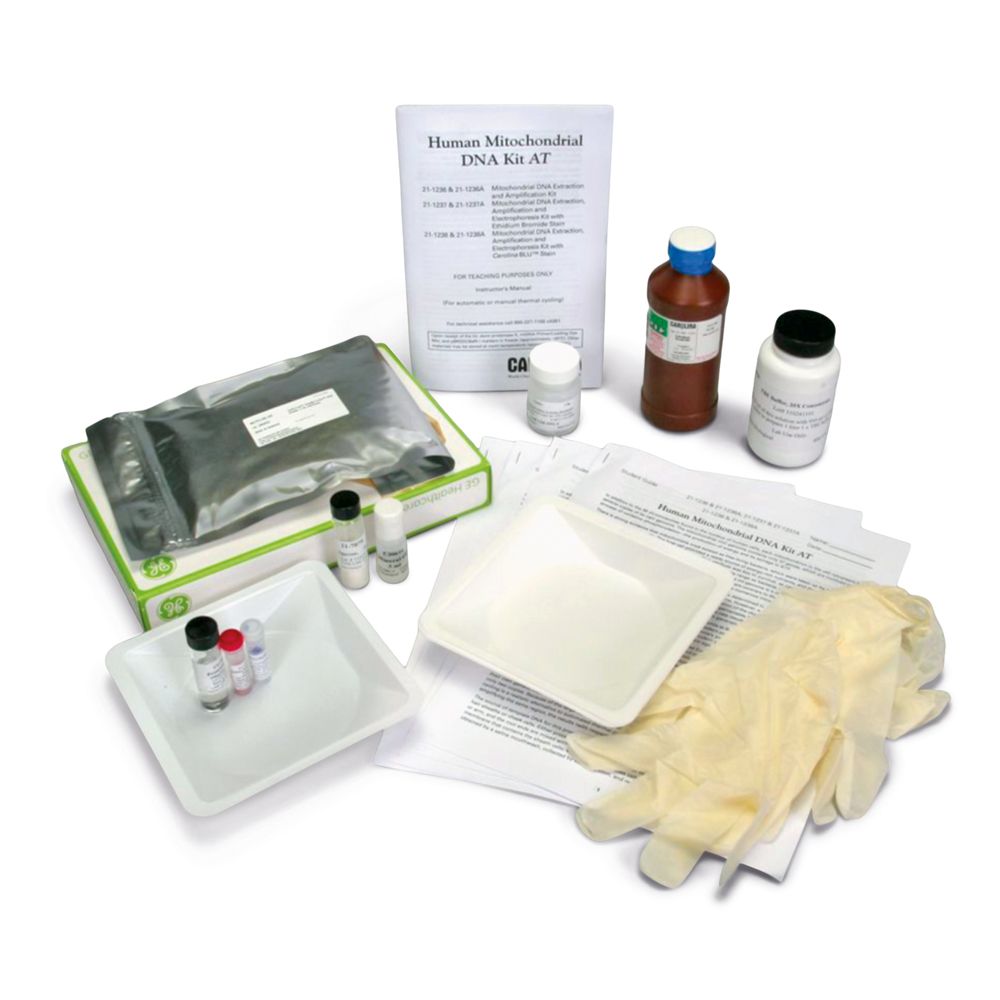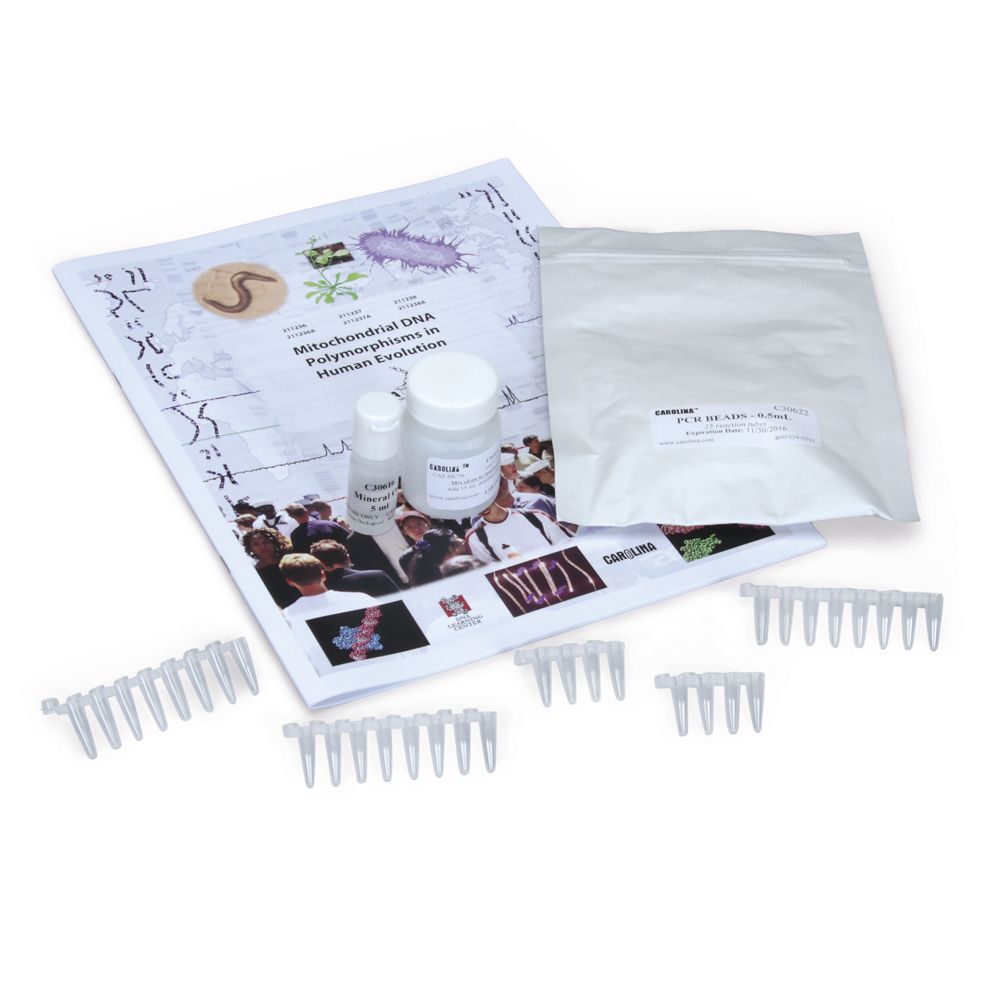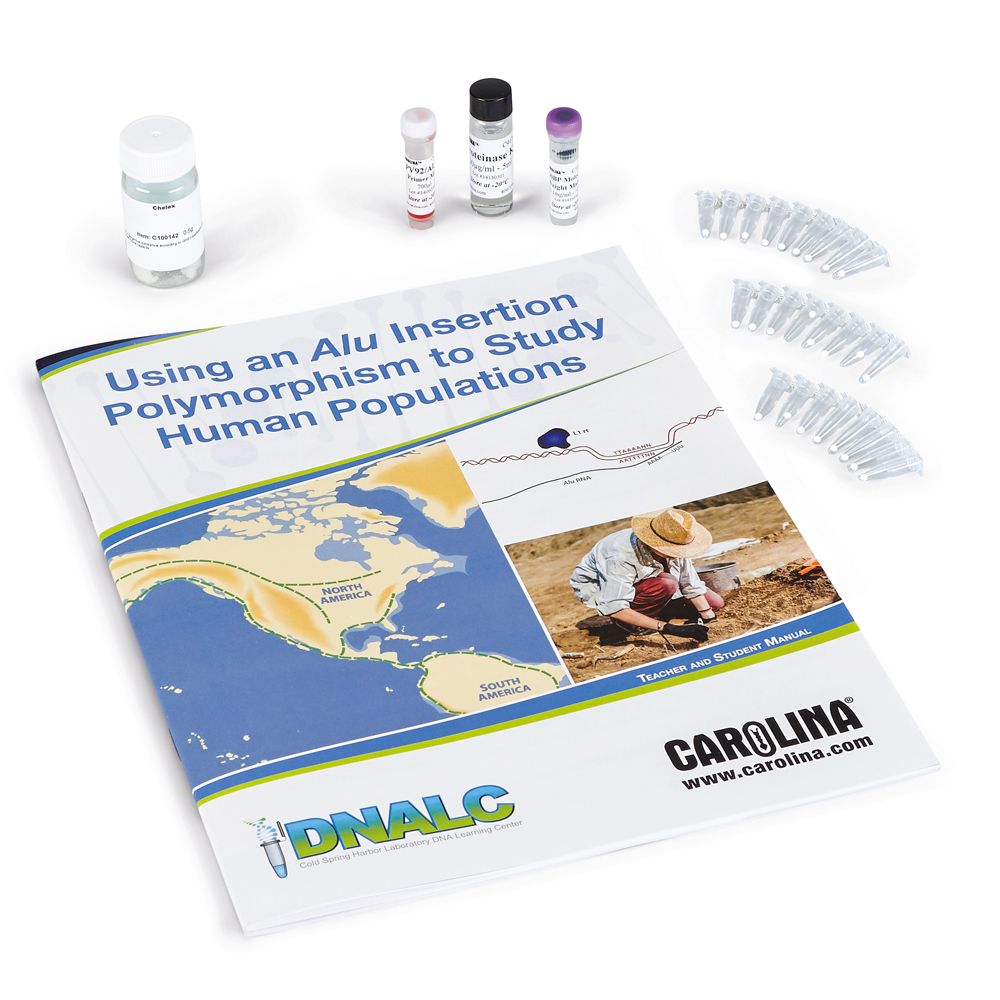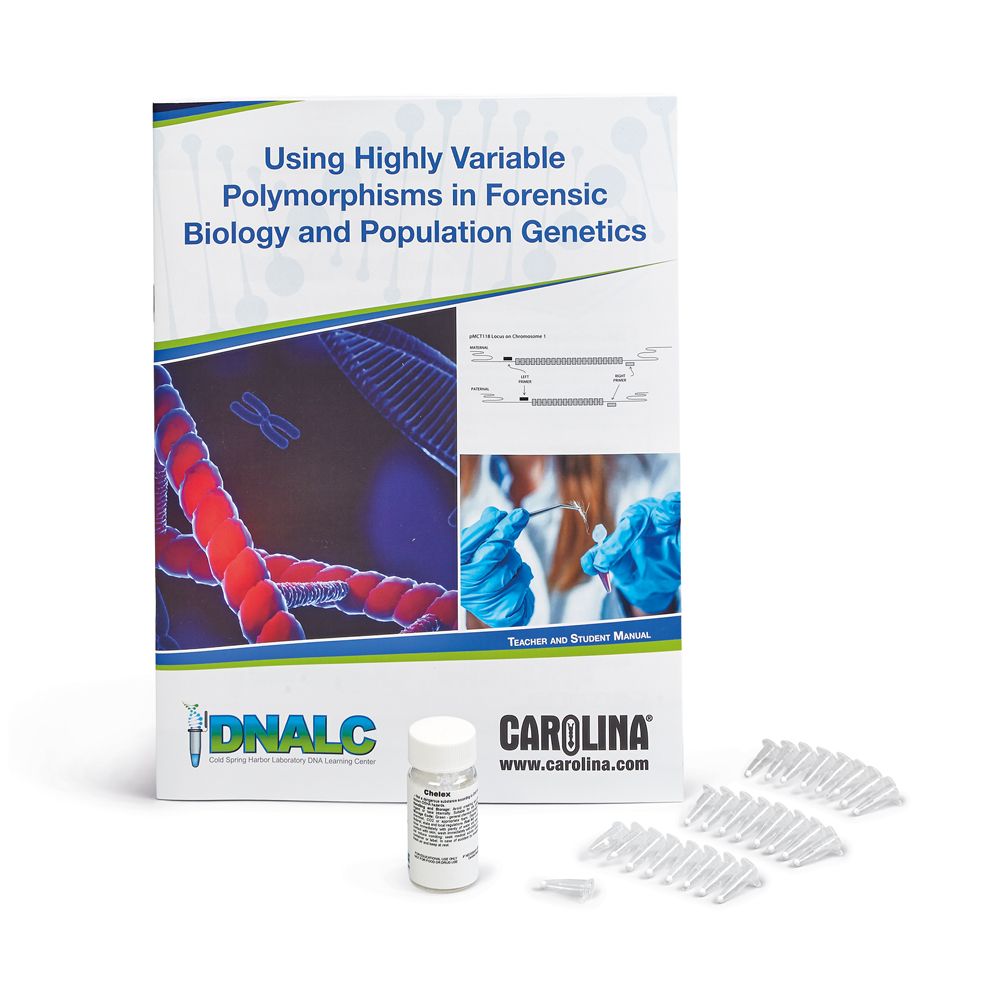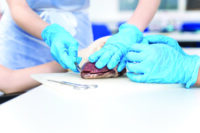This essential curriculum for introductory biotechnology covers DNA structure and function, basic lab techniques, transformation, electrophoresis, restriction analysis, PCR and sequencing, bioinformatics, and bioethics. Supplemental materials include a biotechnology vocabulary assessment and optional labs and activities.
DNA structure and function
Our curriculum begins with a DNA extraction lab. This introductory lab lets your students examine and scientifically observe strands of DNA extracted from an organism, taking some of the mystery out of an abstract and difficult concept. Considering consistently good results and ease of preparation, we recommend the DNALC Strawberry DNA lab or one of the DNA Necklace Kits. After performing the lab, students should make the following scientific observations:
- Cells contain DNA.
- DNA is packaged to fit in a cell.
- DNA is soluble in water and insoluble in alcohol.
- Cells must be cracked open or “lysed” to gain access to the DNA.
Allow at Least three 50-minute class periods for this lab.
- Use the first class period for a prelab review of the structure and function of DNA.
- Use the second class period for doing the lab.
- Use the third class period to analyze and discuss the results.
To prepare for advanced laboratory work, students need to develop skills in handling biotechnology equipment and instruments and in using sterile techniques. We recommend you devote 3 to 5 class periods to this purpose. The Sterile Technique Kit is designed to familiarize students with the necessary skills for handling bacteria, and the Practice Pipetting Stations Kit helps them hone their pipetting skills. To accompany the kit, there is an online video, How to Use a Micropipette, that students can access for visual, step-by-step instructions. Students should also practice making electrophoresis gels by preparing the gels to be used in subsequent labs. Preparing and Pouring a Gel for Electrophoresis is an instructional video that demonstrates proper technique.
Practically all the major advances of genetic engineering in medicine, agriculture, ecology, and genomics are based on taking DNA from one organism and putting it into another for a specific purpose, e.g., to increase a plant’s resistance to insects. This genetic engineering process is called transformation. One of the best transformation labs available is our Green Gene Colony Transformation Kits. It amazes students to see the transformed cells change color, confirming that the transformation has really taken place.
This lab yields consistently good results with minimal teacher preparation time. All activities are completed in three 50-minute class periods with only an extra day or 2 for your preparation work (about 10 to 30 minutes each day). Few labs drive home the concepts of good experimental design and the use of controls in an experiment as well as this one does. The results and discussion sections really make students think about what they are doing, and the transformation efficiency calculation integrates math skills.
Our Exploring Electrophoresis Series of kits work great and are a relatively inexpensive way to introduce your class to electrophoresis. These kits can run on battery power, but we recommend purchasing the Carolina™ Electrophoresis Power Supply for best results. Each kit contains agarose, TBE buffer, CarolinaBLU™ stain, DNA samples (enough for 10 separate experiments), and 5 sets of apparatus that include the following:
- gel boxes
- electrical leads
- gel box electrodes
- combs
- pipetting devices
- sets of DNA and enzymes
A kit costs less than one regular gel box and is about half the cost of a regular power supply, making electrophoresis more affordable for today’s budget conscious schools. Moreover, each kit features restriction enzymes that can be stored at room temperature, and many also feature DNA that can be stored at room temperature as well. Let’s take a closer look at some of these kits.
Exploring Electrophoresis of DNA allows students to make, load, run, and analyze gels with precut DNA. These are the same samples found in the Restriction Enzyme Cleavage Kit that is standard for the AP® Biology lab curriculum, making this kit a very economical substitute.
Exploring Restriction Analysis and Electrophoresis of DNA is a good substitute for the DNA Restriction Analysis Kit and does not require expensive gel boxes or power supplies. This kit allows students to actually “cut” DNA using restriction enzymes.
Exploring Electrophoresis and Forensics lets students just “load-and-go” using predigested DNA. It is a good substitute for the PCR Forensics Simulation Kit.
After an initial purchase, which yields 5 sets of apparatus, you can order the refill kits or build up an abundant supply of apparatus in just a year or so. If your goal is to simply teach the concept of electrophoresis, these kits are our first recommendation.
However, if your goal is to prepare students for further studies in biotechnology, then we recommend using the sophisticated equipment that they will be exposed to in college, research, and industrial labs. We offer this equipment at reasonable prices. For recommendations on equipment purchases, we have provided a Biotechnology Equipment Buying Guide that makes decision-making simple.
Restriction analysis
The goal of this biotechnology curriculum is to expose students to as many of the basics as possible so that they can understand and appreciate what is happening in a real research lab. Often, the objective of a biotechnology lab is to figure out how DNA is arranged. This is called mapping and is used with both large and small sections of DNA.
Naturally, it is best to start students off with problems that involve small sections of DNA. The Restriction Mapping of Plasmid DNA Kit is a simple load-and-go lab that yields consistently good results. After performing the lab, students must reason and apply their knowledge to correctly map the DNA. Set aside at least three 50-minute class periods to get the most out of this lab.The DNA Restriction Analysis Kit is, along with transformation, another classic biotechnology lab that introduces students to some of the fundamental techniques and skills used in research labs worldwide. In this lab, students actually restrict (cut) DNA with several restriction enzymes (molecular scissors) and then apply their knowledge and reasoning to analyze the results. This lab helps students develop the following skills:
- handling DNA and restriction enzymes by pipetting
- cutting DNA with restriction enzymes
- preparing, loading, running, and staining electrophoresis gels
- analyzing results and determining base pair lengths for unknown DNA using semilog graph paper
PCR and sequencing
Polymerase chain reaction (PCR) is an essential tool of biotechnology researchers and is what made the Human Genome Project possible. It allows scientists to amplify (make billions of copies of) a DNA sample for analysis and experimentation. If you do not have the capacity to perform real PCR in your lab or classroom, then do a simulation.
The PCR Forensics Simulation Kit offers a fine PCR simulation that introduces the topic of PCR and reinforces your students’ electrophoresis skills. Follow up this lab by encouraging your students to visit Cold Spring Harbor Laboratory- DNA Learning Center website. It has an excellent animated explanation of PCR (and other DNA-related processes) that can reinforce classroom learning and help resolve any lingering questions.
We have a variety of PCR labs from which to choose. If you don’t know which PCR kit is right for your class, consult our buying guide, Which PCR Kit is Right for You? Whichever Carolina kit you choose, rest assured you are getting kits of the highest quality that are teacher and student friendly, and backed by our service and guarantee.
Additional Reading: Which PCR Kit is Right for You?
Advanced Technology (AT) Human DNA Typing by PCR™ Kits
All of the following (AT) PCR™ labs utilize Ready-To-Go-Beads (RTGB), which reduce preparation time and student error. These labs require the use of a thermocycler with a heated lid such as the Carolina® Compact Thermal Cycler. A thermocycler is a worthwhile investment considering the time and effort you and your students invest in a PCR lab. If your school cannot afford one, then we suggest you:
- borrow one from a nearby university, hospital, business, or school
- ask your district to purchase one machine to be shared among the schools in the district; or
- get financial assistance from your state’s education department. (Remind them that technology money can be used for instruments as well as for computers.)
Each PCR lab involves 5 basic components.
- Isolating DNA from human cells (hair sheaths or cheek cells).
- Utilizing specific primers to amplify the chosen locus by PCR.
- Analyzing the amplified DNA by gel electrophoresis.
- Analyzing and discussing the results of the lab.
- Extending the lab with bioinformatics (computer analysis).
A typical class schedule for a PCR lab includes the following:
- Day 1–Prelab discussion
- Day 2–DNA isolation
- Day 3–PCR amplification (samples typically run overnight)
- Day 4–Electrophoresis: load, run, stain, and photograph gels
- Day 5–Results and discussion
Bioinformatics
A well-rounded biotechnology curriculum must include investigations in bioinformatics. This field of study involves the use of computers to analyze and interpret data generated by the Human Genome Project and other DNA-sequencing efforts. All the labs listed below can be used to give your students valuable experience in analyzing databases for necessary information through the extension activities on the DNALC Web site.
Bioethics
Our biotechnology curriculum includes activities that allow students to explore bioethics. Nearly every day biotechnology discoveries are made that lead to opportunities, possibilities, and decisions for your students to consider. They need practice in placing their prior knowledge, beliefs, and emotions in proper perspective when investigating these bioethical issues.
Probably the best sources for stories that explore these issues are newspapers, magazines, and Internet news sites. Maintain a small library of articles in your classroom and have your students read an article every week. Of course, students are also free to obtain articles on their own. Be sure to stress that their readings must be substantive in nature and not just a quick paragraph or 2. Require that at least a portion of your students’ reading assignments comes from scientific journals or magazines such as Scientific American.

